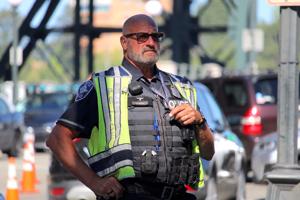Investigation of Seattle police calls for more surveillance, non-police responders

(The Center Square) – Seattle safety investigators say surveillance cameras and sociable police officers could have eased tensions between racial justice protesters and law enforcement last summer.
Those recommendations come from a 110-page “Sentinel Event Review” released by the Office of the Inspector General for Public Safety on Friday. The report, prepared by a five-member panel, agreed with several “Defund the Police” initiatives activists have pushed in the months since the killing of George Floyd led to protests and vandalism across America.
According to the report, the Seattle Police Department(SPD) did not ensure public safety or protect free speech.
“SPD responded to the 2020 protests with skills, strategies, and tactics developed over many decades of facilitating thousands of protests, enhanced by eight years of Consent Decree reform efforts,” the authors wrote. “Those tactics not only proved inadequate for the protests of the summer of 2020…they contributed to escalation of civil unrest and violence.”
SPD hasn’t commented on the report and wasn’t immediately available to provide a response to The Center Square.
The report highlighted several specific incidents in which investigators argue police inflamed tensions. They include the so-called “pink umbrella incident” on May 30, when an SPD officer grabbed a protester’s pink umbrella, instigating a violent clash between officers and lines of protesters that saw tear gas and flashbangs used. Other notable cases included the pepper-spraying of a child by an SPD officer on May 30 during a protest.
Investigators concluded social media and the effects of COVID shutdowns on the city fueled preexisting tensions between police and protesters. In their report, the panel concluded the SPD’s acknowledgment of police brutality and goodwill gestures like “taking a knee” could have relieved some of those tensions.
Instead, the panel wrote that local law enforcement engendered deeper distrust by remaining too tight-lipped around protesters when policing demonstrations in lieu of guidance by the city.
“The Panel’s judgment was that in these early days of the protests, many in the crowd seemed to interpret the officers’s silence as an alignment with, or at least a refusal to refute, the police brutality that was the source of the protest,” the report reads. “As a result, the silence of officers likely escalated tensions overall.”
The report also acknowledges that SPD officers’ verbal interactions with protesters were often offensive and unflattering to the department. Protests in 2020 spurred some 10,000 complaints against the SPD, most of which remain under review, in addition to several outstanding lawsuits.
Moreover, the panel cast doubt on whether the SPD made their best effort to protect storefronts, specifically those in Seattle’s predominantly Asian International District. Instead, investigators wrote that the SPD’s priorities seemed to lie with unarmed protesters, leaving property vulnerable to vandals.
As The Center Square reported last summer, crowd control cost taxpayers $9.3 million in police overtime pay last June or more than the previous two years combined. Seattle has struggled to properly record and regulate overtime pay at the SPD. Efforts as recent as 2016 fell short, according to a city audit.
Among the report’s dozens of recommendations are more surveillance cameras citywide to curb vandalism and emergency messaging apps akin to WhatsApp to replace radios during chaotic demonstrations.
The report’s findings coincide with a proposal from Seattle Mayor Jenny Durkan of a $2 million task force of mental health professionals operating with the Seattle Fire Department’s Mobile Integrated Health program. The force would respond to the more than 8,000 wellness check calls handled by Seattle police officers.
Violent crime in Seattle has trended upwards in line with its booming population. According to city data, shots fired by SPD officers have also increased, as has its impact on Black Seattleites, who are subject to 35.3% of police shootings in the past 15 years.
“Not every call to 911 requires an armed response,” Durkan said. “The specialized triage response model proposal is both creative thinking and a data-informed innovation, providing a qualified response to folks who require assistance but do not represent a threat.”
Such mental health response units currently exist in cities like Eugene, Oregon in the form of Crisis Assistance Helping Out On The Streets (CAHOOTS). The 31-year old mobile crisis unit provides support to local police, providing social services for the intoxicated, mentally ill and distressed at the cost of around $800,000 per year. Today, CAHOOTS diverts up to 8% of calls from police.
SPD Police Chief Adrian Diaz is backing the proposal, saying that mental health training is not often something in most police officers’ wheelhouse.
“A majority of ‘persons down’ calls are people experiencing addiction or health crises, and when SPD responds, we still need to call another entity,” Diaz said.
Based on analysis from the SPD and the National Institute for Criminal Justice Reform, up to 11% of 911 calls in the city do not require an armed officer.
Slowing 911 response times have been blamed on staffing shortages at the SPD due to attrition. Over the past 17 months, the SPD reports it lost more than 250 officers and the capacity for over 300,000 service hours. The SPD also welcomed 20 new officers into its ranks in June, the largest graduating class in its history.
The Inspector General’s recommendations regarding protests will be reviewed by the Seattle City Council’s Public Safety and Human Services committee on Tuesday.
Disclaimer: This content is distributed by The Center Square
